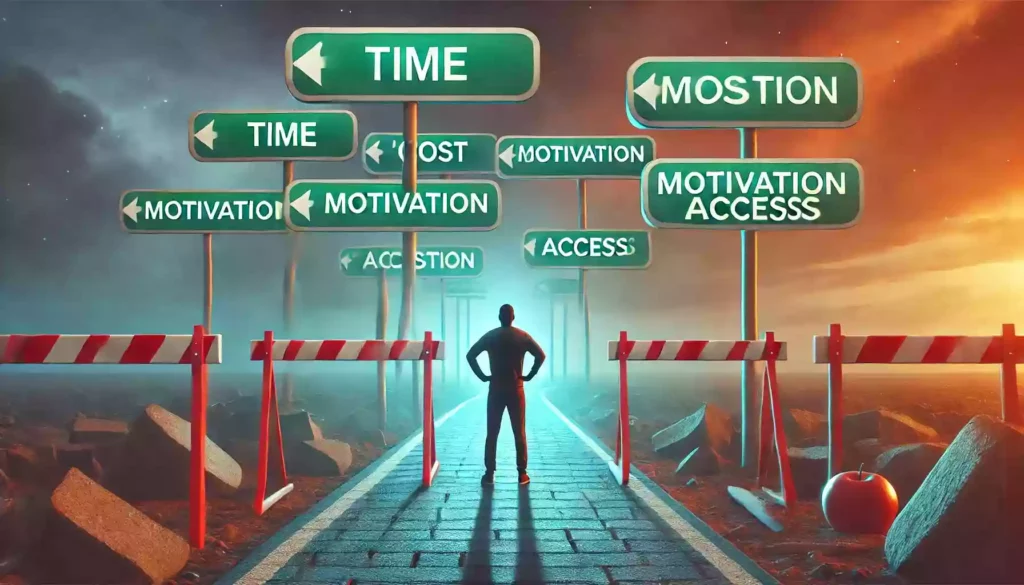Key Takeaways:
- Beliefs influence health behaviors.
- Perceived risks affect decisions.
- Benefits and barriers matter.
- Triggers prompt healthy actions.
- Self-efficacy is crucial.
Introduction to the Health Belief Model
Have you ever wondered why some people are more proactive about their health while others seem indifferent? The answer often lies in the Health Belief Model (HBM). This psychological framework helps explain how our beliefs about health influence our behaviors. Developed in the 1950s by social psychologists at the U.S. Public Health Service, the HBM suggests that our health actions are guided by personal beliefs about health problems, perceived benefits of action, and barriers to action. It's a powerful tool for understanding and changing health behaviors.
As Dr. James Prochaska, a renowned psychologist, once said, "Change is a process, not an event." This model breaks down that process, highlighting the mental steps we take before deciding to change our health behaviors. Understanding this can help you make more informed decisions about your health and well-being.
Understanding Perceived Susceptibility
Perceived susceptibility refers to an individual's belief about the risk of getting a condition or disease. It's a critical component of the Health Belief Model because it directly influences whether a person will engage in health-promoting behaviors. If you believe you're at high risk of developing a health issue, you're more likely to take preventive measures. For example, someone who believes they're at high risk for heart disease may be more inclined to eat a healthier diet and exercise regularly.
Consider this: "People don't change their behavior based on what they know, they change based on what they feel." This quote by Dr. John P. Kotter, a leading expert on change, emphasizes the emotional aspect of perceived susceptibility. If you feel vulnerable to a health risk, that emotional response can drive you to take action.
The Role of Perceived Severity in Health Decisions

Perceived severity plays a crucial role in determining our health behaviors. It refers to an individual's belief about the seriousness of contracting an illness or leaving it untreated. When people perceive the consequences of a health issue to be severe, they are more likely to engage in behaviors that prevent the issue. For example, if you believe that contracting the flu could lead to severe complications, you are more likely to get a flu shot.
Consider this scenario: You are at your doctor's office, and they show you a chart detailing the severe health consequences of untreated high blood pressure, such as heart disease or stroke. This visual representation can significantly impact your perception of the severity, pushing you to take action. As the saying goes, "A picture is worth a thousand words." Seeing the potential outcomes can make the abstract concept of risk much more tangible.
Perceived Benefits: Why We Make Healthy Choices
Perceived benefits refer to an individual's belief in the efficacy of the advised action to reduce risk or seriousness of impact. Simply put, if you believe that a specific health action will benefit you, you're more likely to take it. For instance, if you believe that exercising regularly will help you maintain a healthy weight and prevent diseases, you're more likely to incorporate it into your daily routine.
The perception of benefits is often shaped by personal experiences, observations of others, and cultural or societal norms. When we see the positive outcomes of health behaviors in others, we are more likely to believe in their benefits and adopt those behaviors ourselves. For example, witnessing a friend successfully manage their diabetes through diet and exercise can motivate you to follow a similar path.
As the famous psychologist Albert Bandura noted, "Seeing people similar to oneself succeed by sustained effort raises observers' beliefs that they too possess the capabilities to master comparable activities." This belief in the benefits of health actions is a powerful motivator for change.
Perceived Barriers and How to Overcome Them

Perceived barriers are the obstacles that individuals believe are preventing them from taking action to improve their health. These barriers can be physical, emotional, financial, or social. Common perceived barriers include lack of time, high costs, low motivation, and limited access to resources. Overcoming these barriers is essential for adopting healthier behaviors.
Imagine standing in front of a series of obstacles labeled with common health barriers: "time," "cost," "motivation," and "access." Each barrier represents a challenge you must overcome to reach a healthier lifestyle. Addressing these barriers often requires creative solutions and support from others. For instance, finding a workout buddy can increase motivation, while seeking out affordable or free health resources can mitigate financial concerns.
As health psychologist Dr. Kelly McGonigal suggests, "The biggest barrier to behavior change is not actually a lack of willpower but the feeling of being overwhelmed by the change." By breaking down these barriers into manageable steps and seeking support, you can make significant progress toward your health goals.
Cue to Action: What Triggers Healthy Behaviors?
Cues to action are the triggers that prompt individuals to engage in health-promoting behaviors. These cues can be internal, such as experiencing symptoms, or external, such as receiving a reminder from a healthcare provider. Understanding and recognizing these cues can help you take timely action to improve your health.
Consider the various cues that might trigger a health behavior: a friend's reminder to get a flu shot, a television advertisement about the benefits of quitting smoking, or even a personal health scare. These triggers serve as reminders and motivators to take proactive steps toward better health.
Renowned psychologist B.J. Fogg emphasizes the importance of cues in behavior change: "Designing behavior change is about making the desired behavior easy to do and finding the right trigger." Identifying the cues that resonate with you can significantly enhance your ability to adopt and maintain healthy behaviors.
Self-Efficacy: Believing in Your Ability to Change
Self-efficacy, a term coined by psychologist Albert Bandura, refers to an individual's belief in their ability to execute behaviors necessary to produce specific performance attainments. In the context of health, it means believing that you have the power to make changes that will improve your well-being. This belief is crucial because it influences your motivation and perseverance when facing challenges.
When you believe in your ability to change, you're more likely to set and achieve health goals. For example, if you have high self-efficacy regarding exercise, you are more likely to stick to a workout regimen, even when it's difficult. This confidence often stems from past experiences of success, observing others succeed, and receiving encouragement from others.
Bandura emphasized, "People's beliefs about their abilities have a profound effect on those abilities." By nurturing your self-efficacy, you empower yourself to take control of your health journey and overcome obstacles with resilience and determination.
Modifying Variables: How Personal Factors Affect Health Beliefs
Modifying variables are personal factors that influence your health beliefs and behaviors. These can include demographic factors like age, gender, and ethnicity, as well as psychological traits, cultural background, and past experiences. Understanding these variables can help tailor health interventions to meet your specific needs and circumstances.
For instance, a person's cultural background might affect their perception of certain health practices. In some cultures, traditional medicine might be preferred over conventional medical treatments, impacting how individuals approach health issues. Similarly, personal experiences, such as a family history of a particular disease, can heighten perceived susceptibility and influence health behaviors.
Recognizing and addressing these modifying variables is essential for effective health communication and intervention. It allows for a more personalized approach, ensuring that health messages resonate with individuals on a deeper level. As the saying goes, "One size does not fit all," and this is particularly true when it comes to health beliefs and behaviors.
Practical Applications of the Health Belief Model
The Health Belief Model (HBM) has numerous practical applications in public health and personal health management. One of the primary uses is in designing effective health education campaigns. By understanding the beliefs that drive health behaviors, educators can craft messages that address perceived threats and benefits, thus encouraging positive actions.
For instance, smoking cessation programs often use the HBM to highlight the severe health risks of smoking (perceived severity) and the immediate and long-term benefits of quitting (perceived benefits). These programs also work to reduce perceived barriers by offering resources like nicotine replacement therapies and support groups. By targeting specific beliefs and barriers, such interventions can significantly increase their effectiveness.
Another application is in clinical settings, where healthcare providers use the HBM to motivate patients. A doctor might discuss the personal risk factors for heart disease with a patient, emphasizing the severe consequences if left unmanaged and the benefits of lifestyle changes. This approach can make the advice more relatable and compelling, increasing the likelihood of adherence.
Criticisms and Limitations of the Health Belief Model
While the Health Belief Model is a valuable tool, it is not without its criticisms and limitations. One of the main criticisms is that the HBM does not account for habitual behaviors, which can be automatic and not necessarily the result of conscious beliefs. For example, someone might continue to smoke out of habit, even if they understand the health risks and benefits of quitting.
Additionally, the model does not fully consider the role of social and environmental factors. Health behaviors are often influenced by peer pressure, social norms, and access to resources, which the HBM might not adequately address. This limitation can make the model less effective in predicting behaviors that are strongly influenced by external factors.
Another limitation is the assumption that individuals are rational decision-makers who weigh the costs and benefits of their actions. In reality, emotions and irrational thoughts often play a significant role in health behaviors. As psychologist Daniel Kahneman pointed out, "Humans are not always rational actors, and their decisions are influenced by cognitive biases and emotional states."
Despite these criticisms, the HBM remains a useful framework for understanding and influencing health behaviors. By recognizing its limitations, health professionals can combine it with other models and approaches to develop more comprehensive interventions.
Conclusion: Harnessing the Power of Beliefs for Better Health
The Health Belief Model provides a robust framework for understanding how our beliefs influence our health behaviors. By recognizing the roles of perceived susceptibility, perceived severity, perceived benefits, perceived barriers, cues to action, and self-efficacy, we can make more informed and proactive decisions about our health. This understanding empowers us to overcome obstacles and embrace healthier lifestyles.
Beliefs are powerful motivators. They can either propel us toward positive changes or hold us back in detrimental habits. By harnessing the power of our beliefs, we can take control of our health journey. Whether you're trying to quit smoking, adopt a healthier diet, or manage a chronic condition, understanding and modifying your health beliefs can make a significant difference.
As the ancient Greek philosopher Epictetus once said, "It's not what happens to you, but how you react to it that matters." This wisdom echoes the essence of the Health Belief Model: our perceptions and beliefs shape our reactions and actions. By consciously shaping our health beliefs, we can pave the way for better health and well-being.
Recommended Resources
- Health Behavior: Theory, Research, and Practice by Karen Glanz, Barbara K. Rimer, and K. Viswanath
- Changing for Good by James O. Prochaska, John Norcross, and Carlo DiClemente
- Self-Efficacy: The Exercise of Control by Albert Bandura





Recommended Comments
There are no comments to display.
Create an account or sign in to comment
You need to be a member in order to leave a comment
Create an account
Sign up for a new account in our community. It's easy!
Register a new accountSign in
Already have an account? Sign in here.
Sign In Now